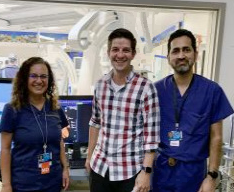Research
The Heart I nstitute, in affiliation with UC San Diego, has made research a major focus, with a mission to conduct high-quality, patient-oriented research. UC San Diego is recognized as one of the top 15 research universities worldwide and is among the top 10 institutions in the nation receiving research funding from the National Institutes of Health.
nstitute, in affiliation with UC San Diego, has made research a major focus, with a mission to conduct high-quality, patient-oriented research. UC San Diego is recognized as one of the top 15 research universities worldwide and is among the top 10 institutions in the nation receiving research funding from the National Institutes of Health.
The Institute’s research includes clinical trials, outcomes analysis and evaluation of clinical pathways. We also facilitate basic and translational research and foster a culture of collaboration to ultimately improve care for those with congenital heart disease.
Our faculty and fellows are currently involved in over 65 ongoing research studies, which include clinical trials, to advance the understanding and application of pharmacological interventions, surgical procedures, electrophysiology procedures and transcatheter interventions in the treatment of children and adults with congenital heart defects.
Use our sub-navigation to explore all the areas of research within the Heart Institute.
- Faculty Research
- Clinical Research
- Basic Science Research
- Recent Publications
- Research Team
- Resources
- Medical/Post-Graduate Students Interested in Research
- Contact Us
Researchers Receive $3.14 Million NIH Grant for Better Imaging During Pediatric Heart Procedures
Engineers and physicians from Rady Children’s and UC San Diego have received a $3.14 million, five-year grant from the National Institutes of Health to help make MRIs a viable option for imaging during heart procedures in children. The team (pictured from left to right) includes Dr. Howaida El-Said, Francisco Contijoch, an assistant professor of bioengineering at the UC San Diego Jacobs School of Engineering, and Dr. Sanjeet Hegde. Learn more.
Innovation
The Heart Institute is at the forefront of innovation, with the goal of providing state-of-the-art care. Through advancements in technology and cutting-edge research, we are able to give our patients the best possible outcomes.
3D Heart Modeling Program
Nearly one out of every 100 newborns in the United States is born with a heart defect. As medicine has evolved over the recent decades, with the advent of technology such as high-resolution cardiac magnetic resonance imaging (MRI) and cardiac computed tomography (CT) scanning, our ability to examine and understand a child’s heart has vastly improved. Thanks to advancements in 3D printing technology, we can now take this understanding to a new level.
Advanced Printing Technology
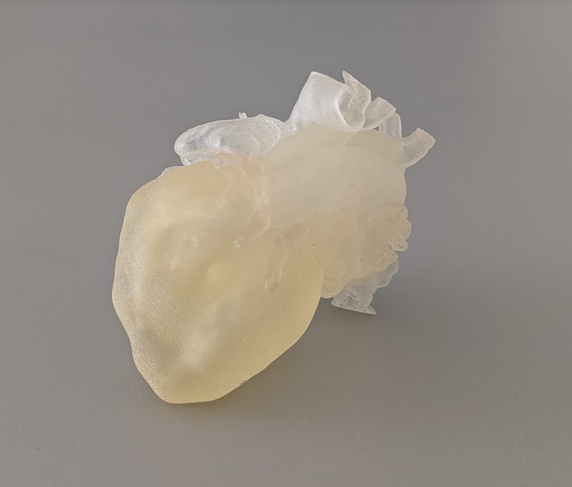
Pediatric heart model (size of a plum) printed in tissue-like material (Tissue Matrix and Agilus 30) on the Stratasys J750™ Digital Anatomy™ 3D Printer)
The Helen and Will Webster Foundation 3D Innovations Lab at Rady Children’s is one of the first facilities in the nation to acquire a 3D printer with the ability to print models that simulate human tissue. Since installing the new machine, the lab has printed life-like models of hearts, airways and bones. This has enabled incredibly precise surgical planning as well as the opportunity for enhanced training and teaching for faculty, residents and students.
Here at Rady Children’s Heart Institute, our cardiac surgeons, led by John Nigro, M.D., are currently using 3D models of congenital heart defects to plan complex heart surgeries. The models are also a powerful education tool for patients and families, as the physician can go from evaluating an image of a patient’s heart on a screen to holding a lifelike model of it in his hands.
First in San Diego
Rady Children’s is the first hospital in San Diego with a 3D heart modeling program, under the direction of Sanjeet Hegde, M.D. To create the model, Dr. Hegde puts the imaging data from a patient’s cardiac CT and MRI scans into a special software program to generate a computer-aided design file. The file is then sent to the 3D printer, which prints out a physical model of the heart.
Video: Learn about our 3D Heart Modeling Program
First Pediatric Image-Guided Intervention Center
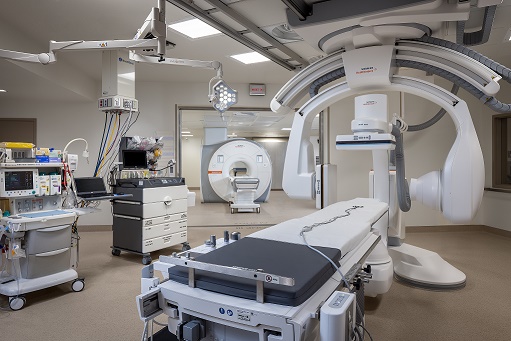
The Dickinson Image-Guided Intervention Center is the first pediatric image-guided intervention center of its kind in the nation. It transforms how children are cared for with heart disease and helps strengthen interventional procedures and advances pediatric care for conditions such as lung, airway, and brain problems.
The Image-Guided Intervention Center houses novel real-time magnetic resonance imaging technology, which benefits patient preparation for treatment by producing clearer pictures and offering minimal or no harmful radiation exposure. It will revolutionize how catheterization procedures are performed and means fewer invasive surgeries and procedures for children, less strain on their small bodies, and greater peace of mind for patients and their families. Faster, better cardiac MRI also offers sedation-free studies without anesthesia.
Advancing Innovation
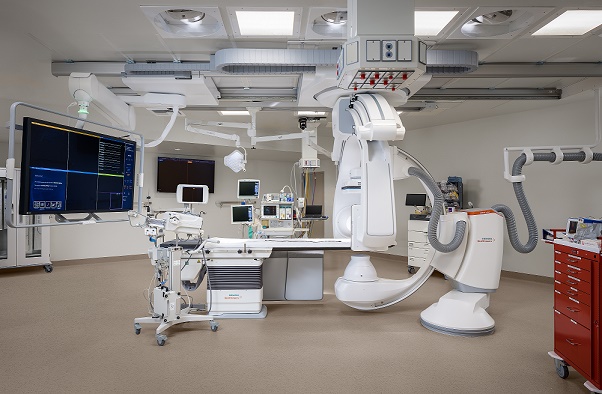
- Radiation-free MRI Cardiac Catheterization
- Sedation-free Cardiac MRI
- Transcatheter Electrosurgery
- Transcatheter Cavopulmonary Anastomosis
- Leadless Transcatheter Pacemaker Implantation
- Complex Airway Intervention/Bronchial Stenting
- Fetal Cardiac MRI
- Exercise Cardiac MRI
- 4D Flow MRI
- Novel Transcatheter Device Innovation
- Transcatheter Valve Implantation
- Universal Patent Ductus Arteriosus Stenting
- Preterm Infant Patent Ductus Arteriosus Device Closure
- Helen and Will Webster Foundation 3D Innovations Lab
Honoring the Legacy of Dr. Kanishka Ratnayaka
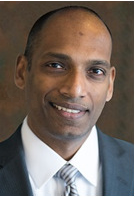
Dr. Kanishka Ratnayaka served as the director of the Dickinson Image-Guided Intervention Center and co-director of research at the Heart Institute at Rady Children’s Hospital-San Diego and as Clinical Professor of pediatrics at UC San Diego School of Medicine. Besides being the director of the Image-Guided Intervention Center, Dr. Ratnayaka was a skilled, award-winning researcher, having authored over 65 peer-reviewed manuscripts and held several patents.
We will always remember him for his magnetic personality, his kindness, and his generosity of spirit. As an organization, we continue to honor Dr. Ratnayaka’s legacy by providing innovative and patient-centered care to those who need it.
Support Our Programs
One hundred percent of your tax-deductible gift benefits Rady Children’s. To make a donation, click below:
